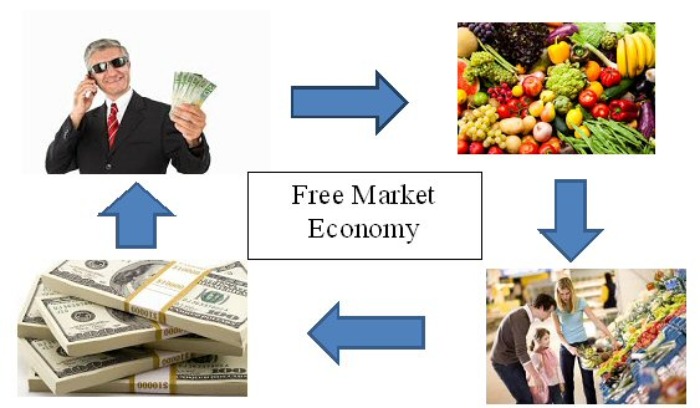The marching economy is an economic system in the monetary decisions and pricing of goods and services guided by the interactions of cytoyens and business enterprises. There may be government intervention or central planning. But this term generally refers to an economy that is generally the most market oriented.
Understanding Market Economies
The theoretical basis of market economics was developed by conventional economists, such as Adam Smith, David Ricardo, and Jean-Baptiste Say.
These free market advocates are classical and liberal. With the result that the “invisible hand” of money and market incentives typically guide economic decisions.
through the paths most productive and efficient for government planning of the economy.1 They create government intervention on a small scale. Tends to lead to economic inefficiencies. This is how, in reality, the situation of people has improved.
Market Theory
The Mercado economies function using the resources of the offer and the request to determine the prices and candidates appropriated by the majority of the goods and the services of the economy.
Entrepreneurs have production factors (tier, labor, and capital), and they combine them in cooperation with employees and financial sponsors to produce goods and services that include consumers and other businesses.
Buyers and sellers acknowledge the terms of these voluntary transactions based on the preferences of consumers for various goods and ingredients that the businesses that obtain with their inversions.
The assignment of returns on the part of the entrepreneurs between different negotiations and production processes is determined by the prospects that they hope to obtain to produce products that their customers will value more and, therefore. And the entrepreneurs will pay for them.
The entrepreneurs that logran are rewarded with skills that can be reverted to future negotiations, and those that logran do not learn to improve with the time or progress.
Modern Market Economies

All the economies of the modern world are situate on a continuum all the way to total planning. The plupart of the develope countries are technically mixed economies that combine the free market with a certain governmental influence.
However, they are often said to have a market economy because they allow market forces to direct the vast majority of activities. And they generally only engage in government intervention to the extent necessary to ensure stability.
Although market economics is clearly the system of popular election. There is significant debate over the amount of government intervention that is considered optimal for efficient economic operations.
Most economists have the impression that the most market-oriented economies tend to generate income, grow the economy. And raise living standards, but on a different menu depending on their precise capacity. The escalation, and specific functions of government intervention that It is necessary to provide the legal funds and institutional framework that allow markets to function properly.
Alternatives to a market economy
Although most countries today have some form of market economy, this has not always been the case. This has been the case, and there are several alternatives to this economic model. The economies of medieval Europe were feudal, for example, and anthropologists have discovered many different financial patterns among indigenous groups.3
Today, there is only a “pure” market economy, except in smaller escalations. Each time, all markets are regulate up to a specific point. This means that free markets can only flourish when governments protect the rights of individuals and ensure markets with adequate infrastructure.
A concern related to these inequalities. Recent studies have shown that in contemporary market economies. The rate of return on investment often exceeds the average growth of a company.
If nothing is done. This phenomenon means that the wealth held by the owners of capital increases much more rapidly than the other types of income (wages for example). This process then creates deeper inequalities.2
Market economy, efficiency, and opportunity cost
The primary purpose of the budget is to satisfy the requirements of individuals and societies. These requirements can be material or immaterial. So that there are productive activities that offer specific goods and services that meet their needs.
The economy ensures that the distribution of these goods and services is correct; Consiguiendo que puedan satisfy a significant number of personas.
Therefore, it is necessary to keep in mind a series of essential lessons. Basan on the idea that all the recursos are escasos. consequently. It is essential to make good decisions to make the best possible decision.
The marching economy is where it is guarante that production in all its aspects works and contributes to the well-being of a country or territory. It also allows good decisions to be made regarding business relationships with other groups whose objective is to improve production and the quality of life of the society it represents.
FAQ
What are the characteristics of a free market economy?
The foremost individual of a Mercado economy is that the people represent the majority of the land. The work, and the capital. In other economic structures, the gobierno or the gobernadores hacen llamamientos.
Why do countries have market economies?
The majority of countries have mixed economies with elements of a market economy. The United States, United Kingdom, Japan, and Germany are examples of aspects of a market economy. Singapore is the country that most seeks to maintain a strictly commercial economy.


